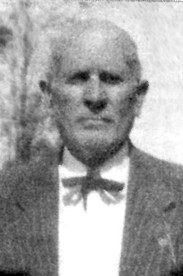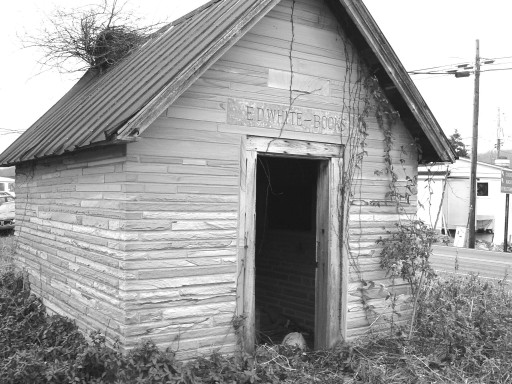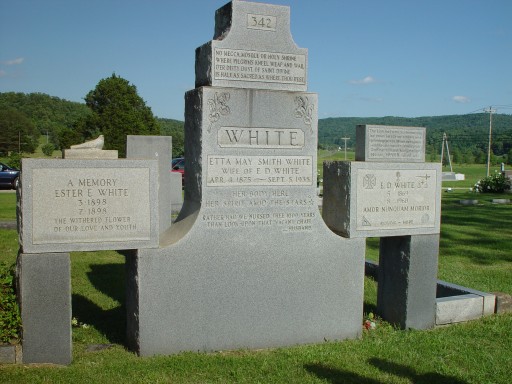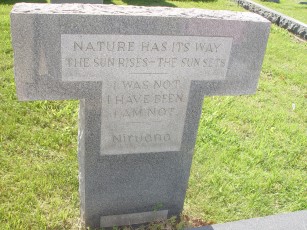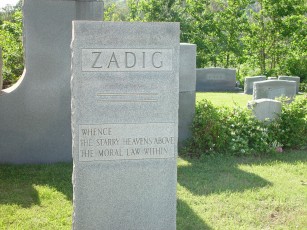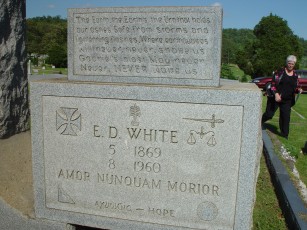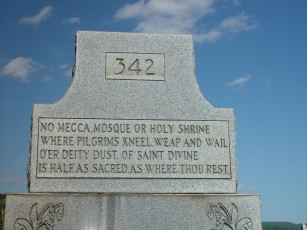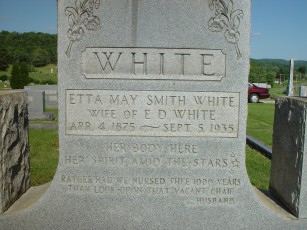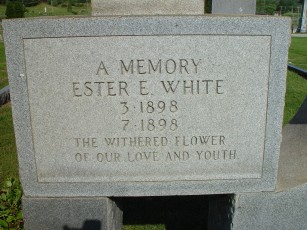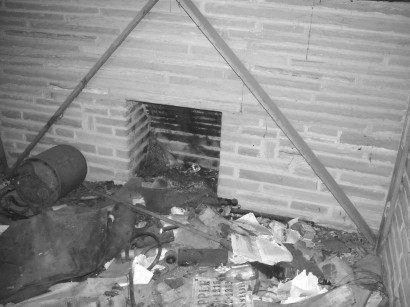|
Just across from the Overton Restaurant,
a little crab orchard stone building still stands that once was the law
library of Don White. Some consideration has been given recently to the
preservation of this little building and to the possibility of moving it
to a location nearer the square, which hopefully can be accomplished.
Preservation of older homes and buildings has been very neglected in the
past in the town of Livingston.
Edward Donnell White was laid to rest in
Good Hope Cemetery, just on the outskirts of Livingston. His family burial
plot there is unlike anything I’ve ever encountered before.
From the dates given, his wife, Etta May
Smith, was born April 4, 1875, and died September 5, 1935. She is buried
beside their small daughter, Ester, who died in July of 1898.
Upon Ester’s monument these words are
engraved: “A Memory – Ester E. White – March 1898 - July 1898. The
withered flower of our love and youth.”
At the top of the very large monument the
wording begins with three numbers ... “342” and just below those numbers
these words are engraved: “No Mecca, Mosque or Holy Shrine where Pilgrims
kneel, weep and wail, O’er Deity Dust of Saint Divine is half as sacred as
where Thou Rest.”
Then underneath that verse, the last name
“WHITE” in large capital letters is engraved. Next is information about
Mrs. White, which reads: “Etta May Smith White, wife of E.D. White, April
4, 1875 - Sept. 5, 1935. Her body here, Her spirit amid the stars (three
small stars are engraved after the word stars) Rather had we nursed thee
1000 years than look upon that vacant chair.” That is followed simply by
the word “husband”.
On another side of the monument these
words can be found: “The Earth, the earth’s the urn that holds our ashes
safe from the storms and lightning flashes. Where earthquakes will never,
never, shake us, Gabriel’s blast MAY never, never, NEVER wake us!”
Information about Mr. White then follows
those words stating as follows: E.D. White, May 1869 - August 1960. Next
are these three words: “Amor Nunquam Morior”. I have been told that these
words and/or phrases may possibly be Buddhist. The next line contains the
word “Ayuwaia” with the word “hope” right beside it. A circle is also
engraved near those two words, and inside the circle reads “Eternal
Recurrence”.
In addition to the extremely large
monument that contains both he and his wife’s information, and their baby
daughter’s, there is a monument for their son, Edward Douglas White, and
that has this information: “Edward Douglas White, May 12, 1908 - April 21,
1955. Victim and Veteran of World War II Three Years in Philippines.”
There are two additional monuments
contained within the plot. The one in the center of the plot reads as
follows: In large capital letters the word “ZADIG” is first, which is
followed by “Whence, The Starry Heavens Above, the Moral Law Within”.
The third monument has these words:
“Nature Has Its Way, The Sun Rises, The Sun Sets. I was not, I have been,
I am not.” Those words are followed by one single word “Nirvana”. At the
very bottom of that monument is the name W.H. Boswell, Architect.
Mr. White went to great lengths to have
these words memorialized with the placement and engraving of these very
unusual monuments in the family plot. And it’s possible that the key to
understanding the words and their meaning may rest solely with the author,
which I am assuming was Edward Donnell White.
To anyone who is
interested in seeing these unusual markers, I would definitely recommend a
drive to Good Hope Cemetery. The monuments still today give testimony to a
very unusual fellow who made his home here in Livingston, raised a family,
had a law practice, and all the while was a person that I would consider
as being one who marched to the beat of a different drummer.
|
